Cygnus NG-14
Human Spaceflight
Related resources
Cygnus NG-14 Resupply Flight to the ISS
Launch
A Northrop Grumman Antares rocket launched the 15th Cygnus cargo freighter on October 3, 2020 (01:16 UTC) on the 14th operational cargo delivery flight to the International Space Station. The mission is known as NG-14. The rocket flies in the Antares 230 configuration, with two RD-181 first stage engines and a Castor 30XL second stage. Launch site: MARS (Mid-Atlantic Regional Spaceport) at NASA's Wallops Flight Facility in Virginia. 1)

Northrop Grumman names each Cygnus spacecraft in honor of individuals who have made substantial contributions to the United States’ commercial space program and human space flight. The NG-14 mission commemorates Kalpana Chawla, a NASA astronaut and the first woman of Indian descent to fly in space. Chawla was selected for the astronaut program in 1994, with her first flight in 1997 on STS-87 aboard the Space Shuttle Columbia. In 2003, Chawla and her crew members tragically lost their lives during mission STS-107 when Columbia did not survive its return to Earth. 2)
Born in Haryana, India, Chawla moved to the United States to earn her master's and doctorate degrees in aerospace engineering from the University of Texas in 1984 and University of Colorado in 1988, respectively. She then began her career at NASA, conducting research in fluid dynamics at the Ames Research Center in California.
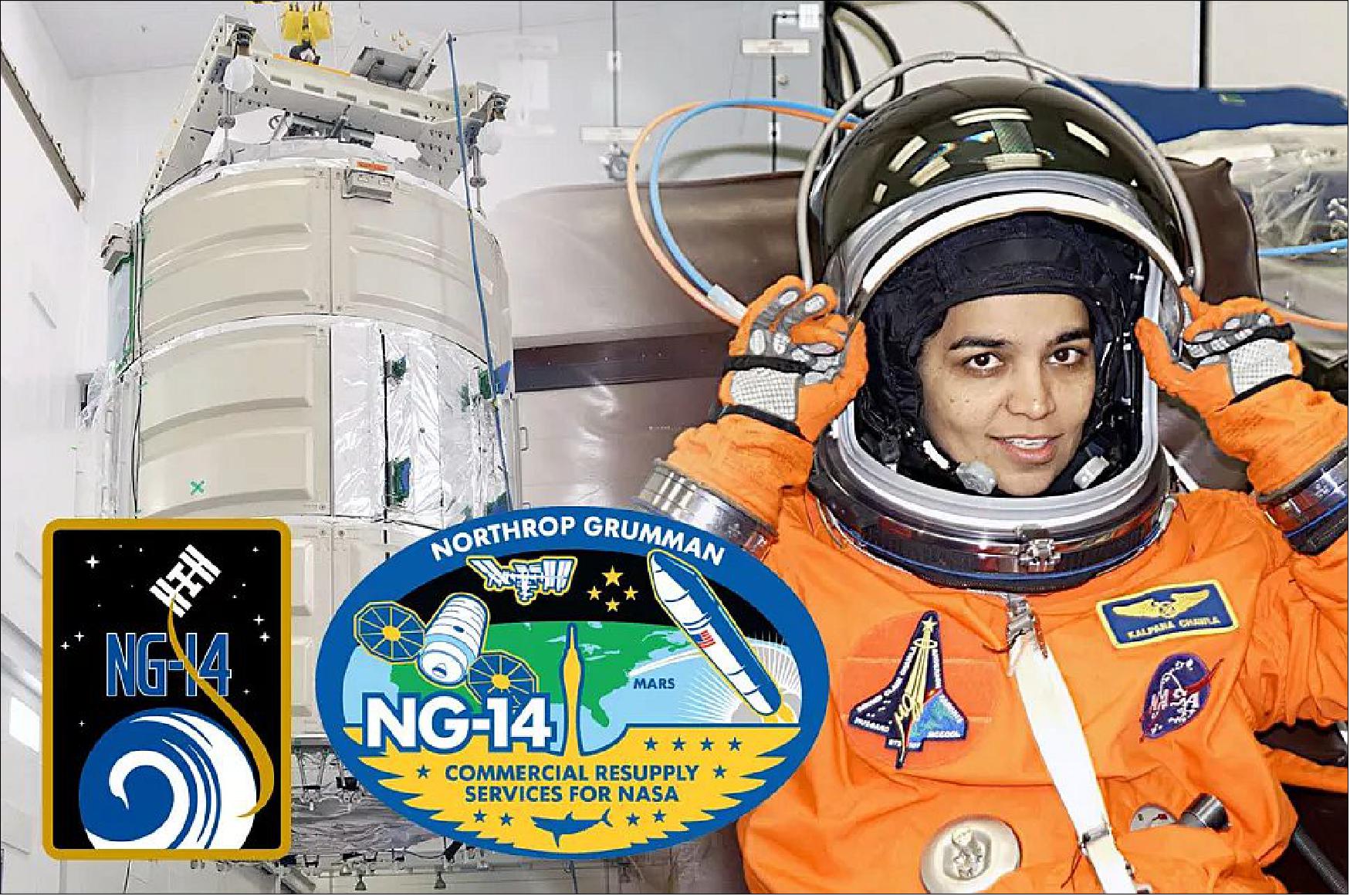
After becoming a naturalized U.S. citizen, Chawla applied for and became a NASA astronaut as a member of "The Flying Escargot," NASA's 15th class of trainees. In 1997, she launched on STS-87, a 15-day shuttle mission that was dedicated to the science flying as part of the fourth United States Microgravity Payload (USMP-4).
Chawla's second spaceflight, STS-107, came to a tragic end on Feb. 1, 2003, following 16 days of conducting science on board the space shuttle Columbia. A small piece of foam that struck the orbiter's left wing during launch created a hole that went undetected during the mission. Upon Columbia's return to Earth, hot plasma entered the wing, tearing it apart, and the resulting loss of control led to the vehicle disintegrating and the death of the crew.

The launch was originally scheduled for Sept. 29 but delayed two days by weather. A launch attempt on Oct. 1 was aborted a little more than two and a half minutes before liftoff because of a problem with software in ground systems.
The Cygnus spacecraft SS Kalpana Chawla is scheduled to arrive at the space station Monday, Oct. 5. Expedition 63 Commander Chris Cassidy of NASA will grapple Cygnus and Flight Engineer Ivan Vagnerof Roscosmos will act as a backup. After Cygnus capture, mission control in Houston will send ground commands for the station’s robotic arm to rotate and install it on the bottom of the station’s Unity module. Cygnus is scheduled to remain at the space station until mid-December, when it will depart the station. Following departure, the Saffire-V experiment will be conducted prior to Cygnus deorbit and disposing of several tons of trash during a fiery re-entry into Earth’s atmosphere approximately two weeks later.
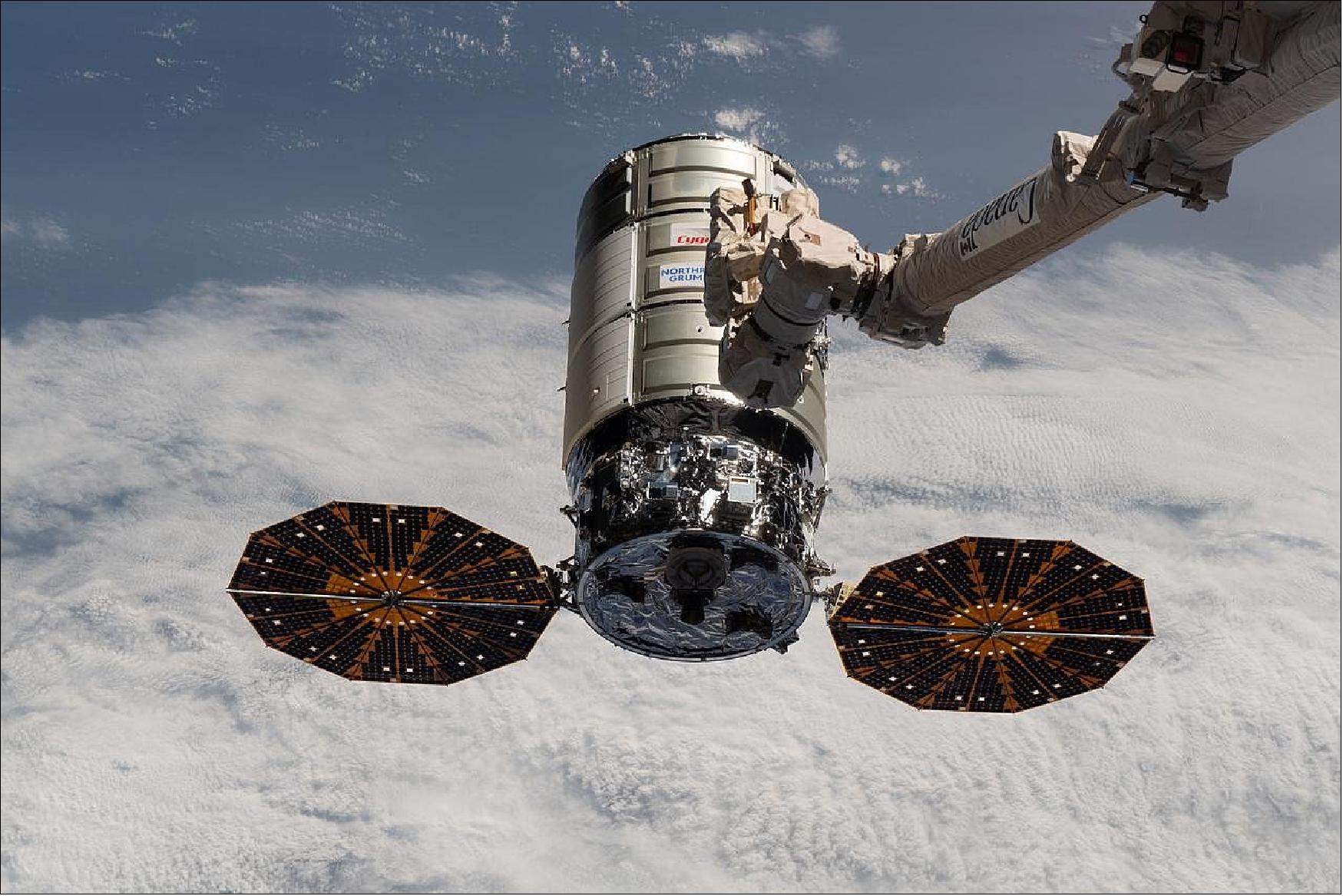
The Northrop Grumman Cygnus spacecraft was bolted into place on the International Space Station’s Earth-facing port of the Unity module at 8:01 a.m. EDT while the spacecraft were flying about 261 miles above the South Pacific Ocean. Cygnus will remain at the space station until its departure in mid-December. Following departure, the Saffire-V experiment will be conducted prior to Cygnus deorbit and disposing of several tons of trash during a fiery re-entry into Earth’s atmosphere approximately two weeks later. 5)

Some Experiments and Payloads
On the NG-14 mission, the S.S. Kalpana Chawla delivered nearly 3,600 kg of food, supplies and experiment hardware for astronauts living on the International Space Station.
- Crew supplies: 850 kg
- Science investigations: 1,217 kg
- Spacewalk equipment: 151 kg
- Vehicle hardware: 1,230 kg
- Computer resources: 71 kg
• Multi-Needle Langmuir Probe (m-NLP) instrument from the University of Oslo and the Norwegian company Eidsvoll Electronics to measure ionospheric plasma densities. With its relatively low orbit, the International Space Station (ISS) passes near the peak plasma density of the ionosphere. The m-NLP is currently the only instrument in the world capable of resolving ionospheric plasma density variations at spatial scales below one-meter. m-NLP will be the first payload to be installed on the Bartolomeo platform outside the European Columbus module.
• ELaNa 31, Educational Launch of Nanosatellites, will deploy the following CubeSats from ISS: BobCat-1, a 3U CubeSat of Ohio State University, Athens, Ohio; NEUTRON-1 (Neutron Flux Detection and COSMOS Mission Operations Technology Demonstration), a 3U CubeSat of the University of Hawaii at Manoa, and SPOC (Spectral Ocean Color) satellite, a 3U CubeSat of the University of Georgia, Athens, GA.
• Two commercial Lemur-2 3U CubeSats of Spire Global, San Francisco.
• Saffire-V (Spacecraft Fire Experiment-V), flying its fifth (and second-to-last) mission, provided by NASA's Glenn Research Center (GRC) in Cleveland, Ohio, safely examines the process of combustion, smoke behavior and flame-spreading in the microgravity environment. The last two Saffires will run at much lower pressures of around 8.2 psi and a 34% oxygen level. These represent significantly higher atmospheric conditions than are found here on Earth and this is expected to increase the energetic vigor of their respective flames. David L. Urban, Ph.D. of the NASA Glenn Research Center in Cleveland, Ohio is the principal investigator for this experiment series. 6)
Further research flying aboard the Cygnus includes (Ref. 1): 7)
Improving how we ‘go’ in space: A new toilet is headed to the space station. Its features improvement on current space toilet operations and help NASA prepare for future missions, including those to the Moon and Mars. The Universal Waste Management System (UWMS) demonstrates a compact toilet and the Urine Transfer System that further automates waste management and storage. The smaller footprint of the UWMS supports a possible increase in the number of crew members aboard the space station, as well as planning for future exploration missions.
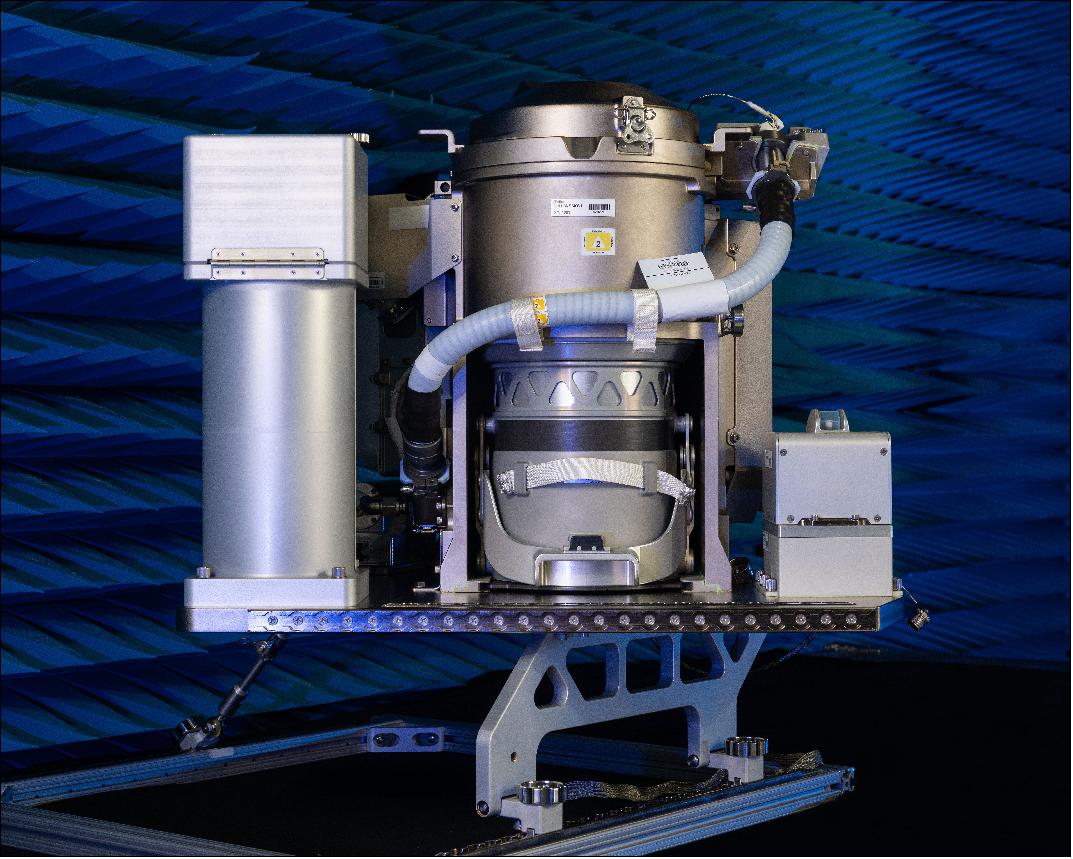
Energy and water from waste: The investigation Elucidating the Ammonia Electrochemical Oxidation Mechanism via Electrochemical Techniques at the ISS (Ammonia Electrooxidation) examines a process for ammonia oxidation in microgravity. An electrochemical ammonia removal system could serve as an innovative water recovery system on long-duration missions to the Moon and Mars and provide vital drinkable water in remote and arid areas on Earth.
Adding radishes to the space salad: A new crop of vegetables is headed to the space station. While previous experiments have grown different types of lettuces and greens aboard the orbiting laboratory, the Assessment of Nutritional Value and Growth Parameters of Space-grown Plants (Plant Habitat-02) investigation adds radishes to the mix, cultivating seeds to see how different light and soil conditions affect growth. Findings could help optimize growth of the plants in space, as well as provide an assessment of their nutrition and taste.
Identifying targeted cancer treatments: The Leveraging Microgravity to Screen Onco-selective Messenger RNAs for Cancer Immunotherapy (Onco-Selectors) investigation tests drugs based on messenger ribonucleic acids(mRNA)for treating leukemia. In normal gravity, the drugs to be tested are onco-selective, meaning they can distinguish cancer cells from healthy ones. Researchers expect any drugs that also demonstrate this trait in microgravity could make good candidates for safer, more effective, and affordable medicines to treat leukemia and other cancers. This could improve survival rates for thousands of people every year.
Spacewalks in VR (Vvirtual Reality): The International Space Station Experience (ISS Experience)is creating an immersive virtual reality series documenting life and research aboard the space station. Partnering with the ISS National Lab and TIME, a team from Felix and Paul Studios launched a customized 360-degree camera to the space station in December 2018that crew members have used to record a few hours inside the station every week. Felix and Paul and partner NanoRacks further modified an additional camera to withstand the extreme conditions of space and are launching for use in filming a spacewalk. The new camera will be mounted to the Canadarm2to capture a spacewalk from start to finish as well as footage of Earth and the exterior of the space station.
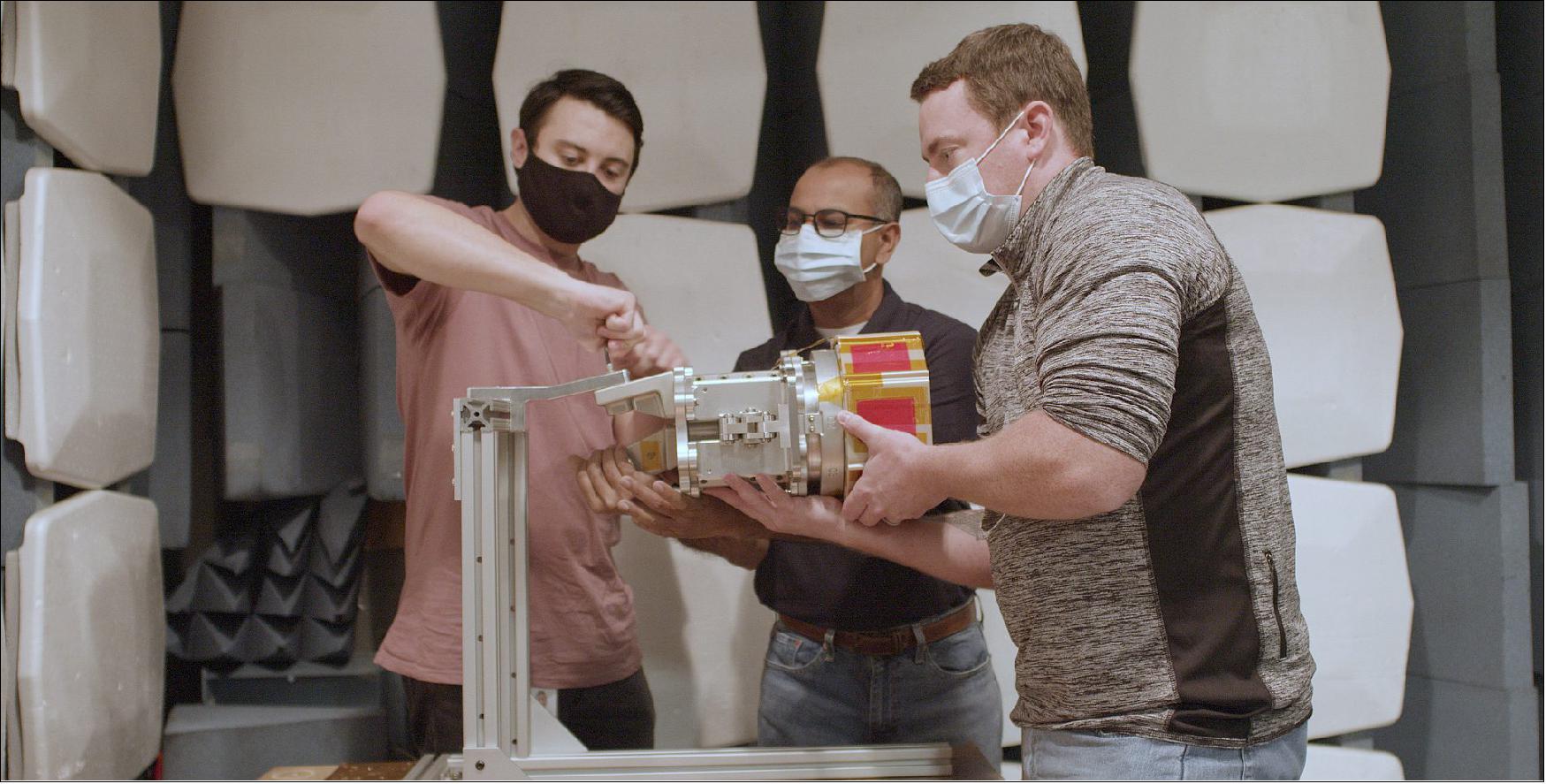
These are just a few of the hundreds of investigations currently being conducted aboard the orbiting laboratory in the areas of biology and biotechnology, physical sciences, and Earth and space science. Advances in these areas will help to keep astronauts healthy during long-duration space travel and demonstrate technologies for future human and robotic exploration beyond low-Earth orbit to the Moon and Mars through NASA's Artemis program.
Cygnus NG-14 Mission Departs from the ISS
• February 15, 2021: A shark moves through the water with speed and agility, always focused on moving forward. It is in this same vein that Northrop Grumman recently developed SharkSat, a pioneering payload to demonstrate on-orbit mission agility and meet demands for rapid development and deployment in space. 9)
- In January, after completing a three-month stay at the International Space Station hosted aboard the company’s Cygnus spacecraft, SharkSat spent two weeks orbiting the Earth and transmitting valuable telemetry and performance data back to mission controllers.
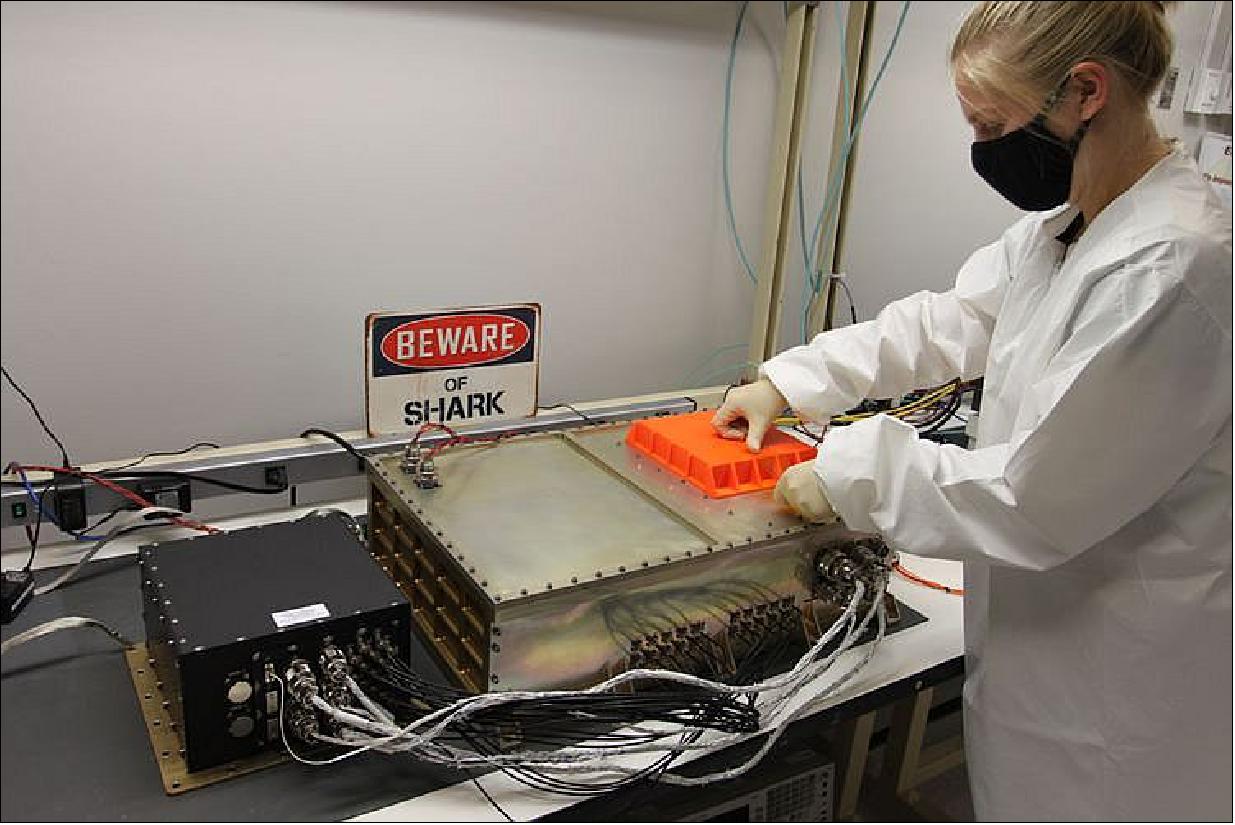
- “SharkSat’s success directly reflects the speed and agility that our team put forth to deliver mission success,” said Candace Givens, vice president, payload and ground systems division, Northrop Grumman.
- During its mission, SharkSat successfully collected on-board data, which provided insight into the health and functioning of its electronic components after departing the space station. It also validated the ability to add new software to an in-flight satellite from a terrestrial ground station and demonstrated the resilience of these technologies through the South Atlantic Anomaly (SAA). The SAA is a region of space known to cause low-earth orbiting satellites to lose communication and their hardware to brown-out, interrupting operations.
- Components of the payload included a multi-processor architecture to support space-to-space and space-to-ground communication targeted toward the development of a Ka-Band software defined radio. These technologies have uses in fields such as 5G telecommunications, satellite communications, and autonomous and cognitive systems. The SharkSat payload also offers a path for next generation space systems to have more capability, reduced size, weight and power (SWaP), lower cost and reduced development timelines.
- SharkSat serves as a stepping stone toward reusing these technologies for multiple applications in the future. Its improvements center around using advanced and higher performance components that are more capable, yet consume less power.
- While the payload itself was created based on an agile development process, the team who made it possible was assembled with that in mind. The SharkSat team was comprised of early-career and experienced professionals that brought unique experiences and perspectives on how to achieve mission success. They put a premium on achieving quality through innovation and agility while taking calculated risks, testing thoroughly and tight collaboration.
- “Engaging the full capabilities of our Space Systems team laid a collaborative foundation across the business,” said Dave Schiller, SharkSat program manager for concept development and engineering, Northrop Grumman. “Our partnerships, together with an end-to-end focus, created opportunities for making exciting new ideas a reality, allowing us to overcome challenges as a team and complete a successful mission.”
- Along the way to mission success, Northrop Grumman’s SharkSat team put into practice flexibility, agility, hard work and an open-mind — encouraging them to swim confidently forward to the next challenge.
• January 13, 2021: The Saffire-V investigation was launched on Northrop Grumman's CRS-14 cargo ship on October 3, 2020. The sample materials were similar to Saffire-IV, with a few additional materials to burn. In addition, the samples were burned at 8.2 psia and 34% oxygen levels to simulate atmosphere conditions for deep space exploration vehicles. Data obtained from Saffire-V will be used in the validation modeling of spacecraft fire response scenarios, and increases our confidence in fire safety equipment and strategies for future spacecraft. 10)
>- January 19, 2021: Our understanding of the way fire behaves in space is expanding as the fifth in a series of NASA investigations ignited recently. The Spacecraft Fire Safety Experiment-V (Saffire-V) successfully tested larger, more dynamic fires for over 26 hours inside Northrop Grumman’s Cygnus spacecraft, following its primary mission of delivering supplies to the International Space Station. 11) 12)
Figure 9: Saffire Ignites New Discoveries in Space. A sample of polymethyl methacrylate, also known as Plexiglas, was burned in the Saffire-V experiment. Ribs were manufactured into the material to see how the flame behaved when small structures were incorporated into larger materials. Researchers discovered that fires in microgravity typically grow and burn faster on the thinner ribs and materials as opposed to thicker samples on the right (video credit: NASA/GRC)
- After Cygnus departed the station on Jan. 6, operators on the ground, for the first time on a Saffire mission, lowered the pressure inside the spacecraft and backfilled it with oxygen to replicate potential atmospheric conditions that would likely be experienced inside future human spacecraft.
- After ignition, cameras and sensors monitored flame growth, temperature variations, and oxygen changes, which were translated into data. The data will be used to model fire response scenarios, as well as fire detection, combustion product monitoring, and post-fire cleanup.
- “The elevated oxygen levels show more energetic flames, which would have a larger impact on the vehicle,” says Gary A. Ruff, Saffire project manager at NASA’s Glenn Research Center in Cleveland. “The Saffire-V data will allow us to model fire scenarios and increase our confidence in safety strategies.”
- Another Saffire experiment is ready to fly on an upcoming launch to the space station as NASA continues to pursue a greater understanding of the risks and behaviors of fire in space for Artemis astronauts who will explore the Moon and eventually Mars.
• January 6, 2021: Northrop Grumman Corporation announced today that the company has completed the first phase of its 14th cargo resupply mission to the International Space Station under NASA’s Commercial Resupply Mission (CRS-2) contract. Cygnus was released by the station’s robotic arm at 10:11 a.m. ET, carrying more than 4,000 pounds (~1800 kg) of disposable cargo and will remain in orbit for approximately two weeks for the secondary phase of its mission. 13)
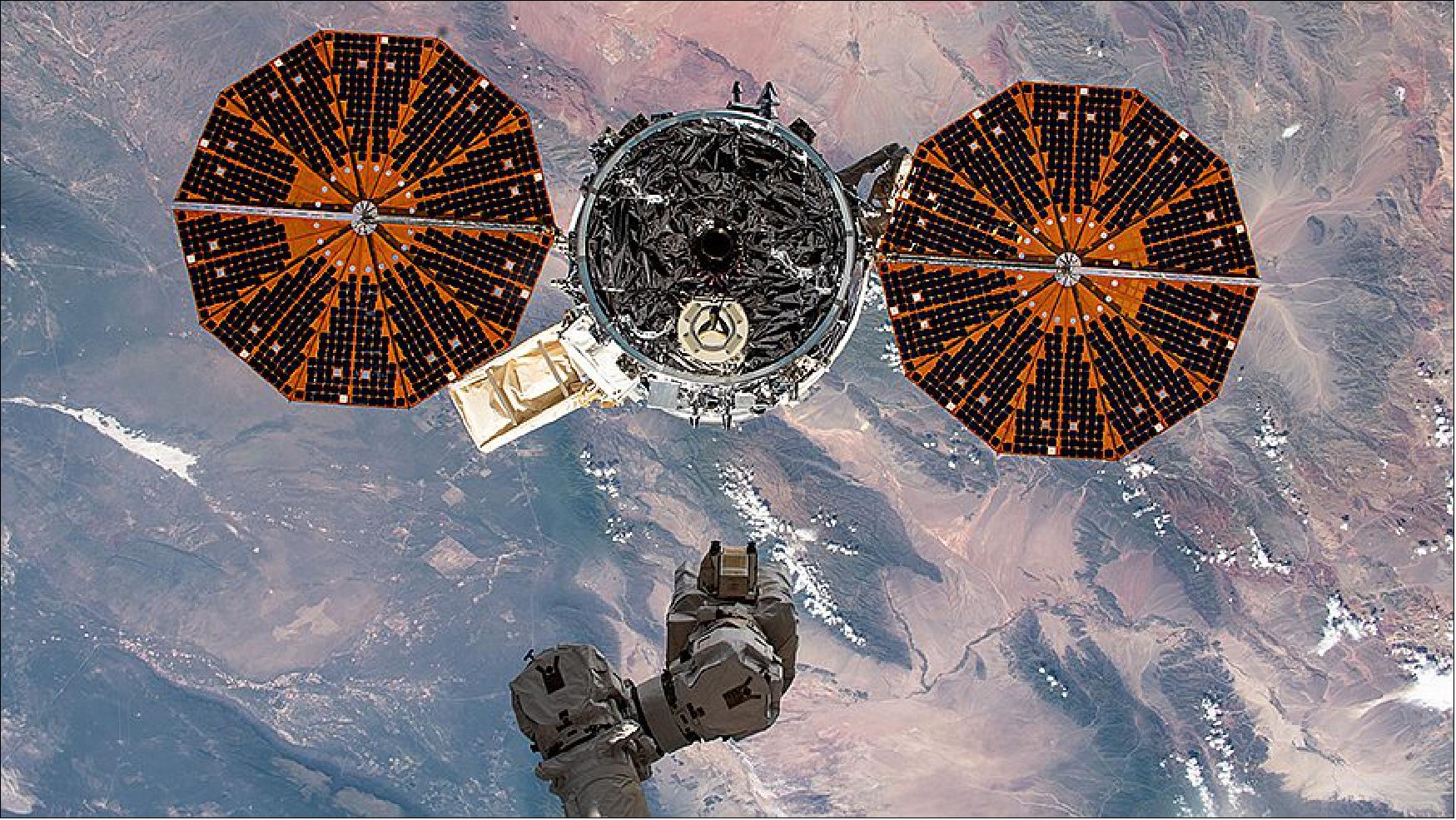
- “For more than six years, Northrop Grumman has supported human spaceflight by delivering critical cargo to astronauts aboard the International Space Station and acting as a host to a number of science experiments and technology demonstrations,” said Frank DeMauro, vice president and general manager, tactical space systems, Northrop Grumman. “Our Cygnus spacecraft will once again demonstrate the capabilities and flexibility we offer our customers by conducting critical experiments during our secondary mission phase.”
- Cygnus’ secondary mission includes conducting NASA’s Spacecraft Fire Safety Experiment V (Saffire-V) experiment, which helps researchers understand how fire behaves in microgravity, and hosting the SharkSat payload.
- SharkSat is a Northrop Grumman-developed prototype payload mounted to the Cygnus spacecraft that will provide data about the performance of key technologies in a space environment for future missions. SharkSat is driving rapid innovation in technology development and growing Northrop Grumman’s next generation of technical leaders. SharkSat acts as a testbed for future uses in fields such as 5G cellular network communications, satellite communications, radar, and autonomous/cognitive systems. 14)
- Until Cygnus’ departure from the International Space Station, SharkSat remained in a quiescent state, even since its launch in October 2020. Operations will commence shortly after Cygnus raises its orbital altitude and releases a group of third party CubeSats.
- The “S.S. Kalpana Chawla”, launched Oct. 2 aboard Northrop Grumman’s Antares rocket, carrying nearly 8,000 pounds (approximately 3,600 kg) of scientific research, supplies and equipment to astronauts living on the station. The vehicle has been docked with the orbiting laboratory since Oct. 5 2020.
References
1) Kathryn Hambleton, Courtney Beasley, ”NASA Science, Cargo Heads to Space Station on Northrop Grumman Resupply Mission,” NASA Release 20-094, 03 October 2020, URL: https://www.nasa.gov
/press-release/nasa-science-cargo-heads-to-space-station-on-northrop-grumman-resupply-mission
2) ”Northrop Grumman Set to Launch 14th Cargo Delivery Mission to the International Space Station,” Northrop Grumman Newsroom, 28 September 2020, URL: https://news.northropgrumman.com/news/releases/
northrop-grumman-set-to-launch-14th-cargo-delivery-mission-to-the-international-space-station
3) ”Cargo spacecraft named for fallen NASA astronaut Kalpana Chawla,” Space.com, 9 Sept. 2020, URL: https://www.space.com/cygnus-cargo-spacecraft-named-kalpana-chawla.html
4) ”NASA Commercial Resupply Mission,” Northrop Grumman, September 2020, URL: https://www.northropgrumman.com/space/cygnus-ng-14-mission-page/
5) Norah Moran, ”Cygnus Resupply Ship Attached to Station Unity Module,” NASA Space Station, 5 October 2020, URL: https://blogs.nasa.gov/spacestation/2020/
10/05/cygnus-resupply-ship-attached-to-station-unity-module/
6) ”Spacecraft Fire Experiment-V,” NASA, 2020, URL: https://www.nasa.gov/
mission_pages/station/research/experiments/explorer/Investigation.html?#id=1924
7) Melissa Gaskill, ”Cygnus Carries Toilet, Cancer Research, VR Camera to Space Station on 14th Mission,” NASA, 22 September 2020, URL: https://www.nasa.gov
/mission_pages/station/research/news/ng14-research-highlights
8) Melissa Gaskill, ”Cygnus Carries Toilet, Cancer Research, VR Camera to Space Station on 14th Mission,” NASA, 28 September 2020, URL: https://www.nasa.gov/
mission_pages/station/research/news/ng14-research-highlights
9) ”Northrop Grumman’s SharkSat Payload Showcases Agility from the Ground to Orbit,” Northrop Grumman News, 15 February 2021, URL: https://news.northropgrumman.com/news/
features/northrop-grummans-sharksat-payload-showcases-agility-from-the-ground-to-orbit
10) ”Spacecraft Fire Safety (Saffire),” NASA Advanced Exploration Systems, 13 January 2021, URL: https://www.nasa.gov/saffire
11) Kelly Sands, ”Saffire Ignites New Discoveries in Space,” NASA, 19 January 2021, https://www.nasa.gov/feature/glenn/2021/saffire-ignites-new-discoveries-in-space
12) Burning Plexiglass in Saffire-V orbital fire experiment,” ESA, 15 June 2021, URL: https://www.esa.int/Enabling_Support/
Space_Engineering_Technology/No_fire_in_the_sky_preventing_an_astronaut_s_worst_nightmare
13) ”Northrop Grumman’s NG-14 Cygnus Spacecraft Completes Primary Mission to the International Space Station,” Northrop Grumman News, 6 January 2021, URL: https://news.northropgrumman.com/news/releases/
northrop-grummans-ng-14-cygnus-spacecraft-completes-primary-mission-to-the-international-space-station
14) Melissa Gaskill, ”Space Station, Cygnus Test Technology for 5G Communications, Other Benefits,” NASA 5 January 2021, URL: https://www.nasa.gov/mission_pages/station/research/news/sharksat-demo
The information compiled and edited in this article was provided by Herbert J. Kramer from his documentation of: ”Observation of the Earth and Its Environment: Survey of Missions and Sensors” (Springer Verlag) as well as many other sources after the publication of the 4th edition in 2002. - Comments and corrections to this article are always welcome for further updates (eoportal@symbios.space).